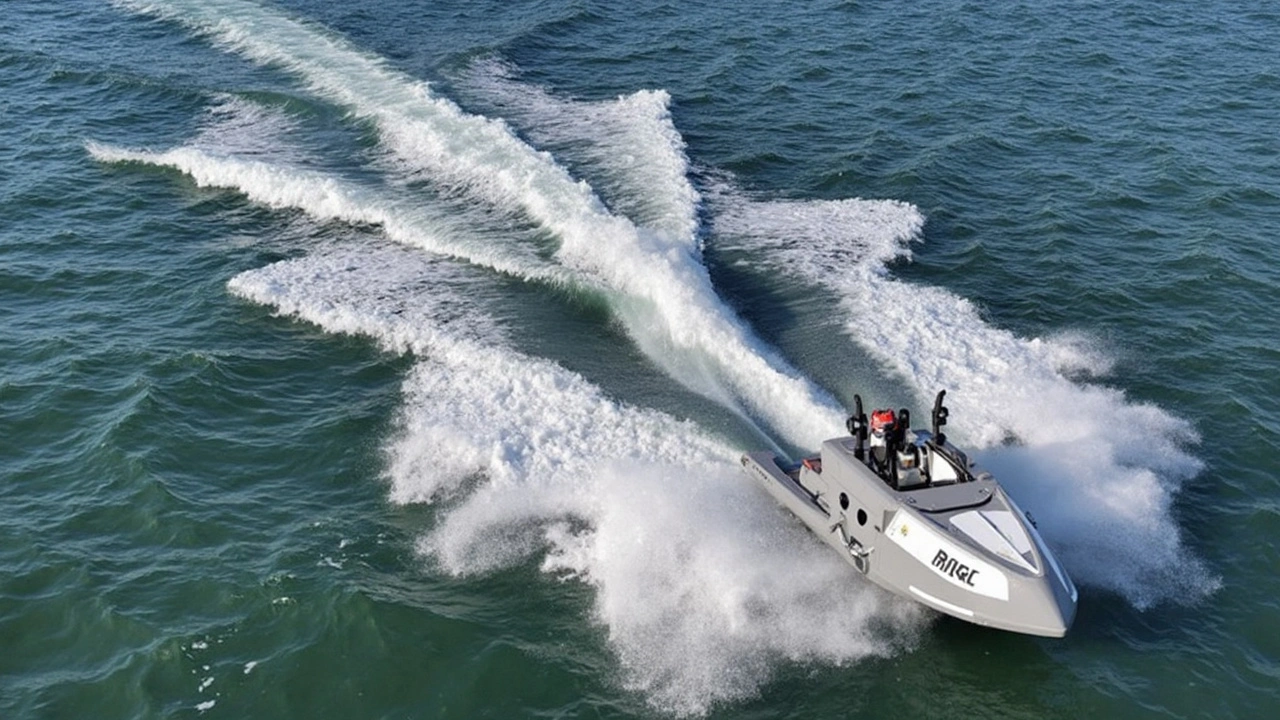- Harry Potter Fans Left Disheartened as King's Cross Back to Hogwarts Countdown Fizzles Out Sep 3, 2024
- Trump Designates Nigeria as Religious Freedom Violator, Threatens Aid Cuts and Military Action Nov 3, 2025
- Eminem's 'Houdini' Drops with Bold Celebrity Mentions and a Thematic Music Video Jun 1, 2024
- Derby della Capitale preview: Lazio vs Roma lineups, injuries and odds Sep 22, 2025
- Malawi's Urgent Search for Missing Military Plane with Vice President: International Support Pouring In Jun 12, 2024
Uncrewed Surface Vessel (USV): What They Are and Why They Matter
An uncrewed surface vessel (USV) is a boat or ship that operates without a person on board. You can control it remotely or let it run on autopilot. People call them maritime drones or autonomous boats. They handle tasks that are risky, repetitive, or expensive for crewed ships.
USVs come in different sizes and designs: small catamarans for coastal surveys, torpedo-shaped hulls for longer endurance, and larger craft for offshore work. Common power systems include batteries, diesel engines, solar panels, or hybrid mixes. The platform you pick depends on range, payload and mission needs.
Common missions and payloads
USVs carry sensors and tools for specific jobs. Typical missions include: oceanographic research (CTD sensors, ADCP), fisheries and illegal fishing patrols (cameras and radar), environmental monitoring (oil spill detectors, water quality sensors), port security and surveillance, and hydrographic mapping (multibeam sonar). Some USVs tow sonar arrays for seabed mapping, others mount LiDAR and cameras for close-range inspections of platforms or hulls.
Payload choices shape mission costs. A basic camera and GPS suit coastal patrols. Scientific work needs precise instruments and stable platforms. When you plan a mission, list required sensors, data rates, and power draws first—those choices decide hull type and battery capacity.
How to start using USVs
If you or your organisation are thinking about a USV, follow a clear checklist. First, define the mission and success metrics: range, data resolution, and time on station. Second, match payloads to a platform: small craft for short surveys, larger USVs for weeks at sea. Third, check local maritime rules and apply for permits. Many countries require notifications, transponder settings and safety plans for uncrewed craft.
Next, sort communications and data handling. Coastal missions can use LTE or VHF links; offshore jobs need satellite or long-range radio. Set up secure data pipelines and backups—loss of data at sea is common and costly. Train a small team in operations and emergency recovery. Start with day missions close to shore before attempting long offshore runs.
Keep safety and maintenance front and centre. Have a recovery plan for lost comms, a checklist for pre-launch inspections, and spare parts for common failures like thrusters or GPS. Test firmware updates in controlled conditions before field deployment.
USVs lower costs, reduce risk to crew, and collect continuous data that was hard to get before. But they face limits: weather, battery life, marine regulations and cybersecurity threats. Addressing those limits through redundancy, robust comms and clear legal steps makes USVs a practical tool for research, security and commercial uses.
Want examples? Look up Saildrone for ocean science, Sea-Kit and ASV Global for commercial and defence work, and Wave Glider for long-endurance surface gliders. Each shows how different designs solve different problems at sea.
If you need help picking a platform or planning a first mission, identify your top three mission goals and reach out to a supplier or local maritime authority. Clear goals make the rest straightforward.
UK’s MARS Drone Boat Breaks Cover: The Fast-Tracked Revolution in Naval Warfare
- Katlego Sean Mahaye
- May 7, 2025
British firm SubSea Craft has unveiled the MARS USV—a highly adaptive, multi-mission drone boat built in just 100 days. Geared for naval warfare, it uses advanced sensors, supports UAV launches, and handles resupply missions autonomously, marking a leap in unmanned maritime defense.
